Toggenburg Goat
- February 22, 2024
- 0 comment
The Toggenburg goat, originating from the Toggenburg region of Switzerland, is a breed known for its distinct characteristics and rich history. These goats have been documented since the 19th century, making them one of the oldest recognized dairy goat breeds. With their medium-sized bodies covered in short, fine coats ranging from shades of brown to tan, Toggenburg goats possess a striking appearance, often accentuated by distinct white markings.
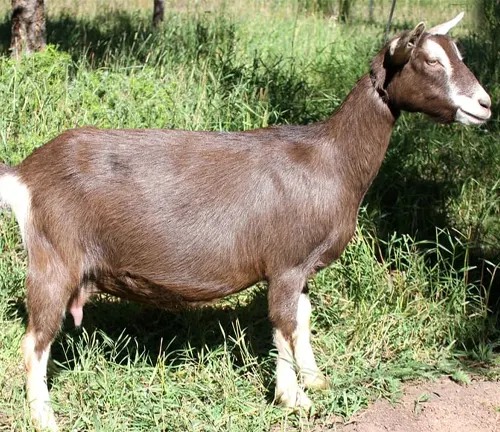
Known for their gentle temperament, they are valued not only for their milk production but also for their versatility in various agricultural and ecological roles. Their adaptability to different climates and terrain, coupled with their sociable nature, makes them suitable companions for farmers and homesteaders alike. As ambassadors of Swiss agricultural heritage, Toggenburg goats continue to play a significant role in modern farming practices, embodying resilience, versatility, and the enduring bond between humans and livestock.
| Specification | Description |
|---|---|
| Origin | Toggenburg region of Switzerland |
| Size | Medium-sized |
| Coat | Short, fine coat |
| Color | Shades of brown to tan with distinct white markings |
| Temperament | Gentle and sociable |
| Use | Primarily dairy production, also valued for meat and fiber |
| Milk Production | Moderate to high, with milk rich in butterfat and protein |
| Adaptability | Thrives in various climates and terrains |
| Behavior | Docile and easy to handle |
| Economic Importance | Valuable in dairy farming, land management, and textile industries |
| Conservation Status | Not endangered, but conservation efforts are important for preserving genetic diversity |
| Breeding | Selective breeding to maintain desired traits and genetic diversity |
| Common Health Issues | Susceptible to parasites, respiratory infections, and metabolic disorders |
| Housing and Care | Requires adequate shelter, space, and proper nutrition for optimal health and productivity |
| Agricultural Applications | Used for milk production, brush clearing, and weed control |
The Toggenburg goat, a breed originating from Switzerland, is renowned for its distinct characteristics and versatile applications in agriculture and beyond. With a rich history and unique physical traits, these goats have carved a niche for themselves in various parts of the world. This article delves into the intricacies of Toggenburg goats, exploring their origin, traits, care requirements, and significance in different sectors.
Origin and History
The origin and history of Toggenburg goats trace back to the Toggenburg region of Switzerland. These goats were first documented in the 19th century, making them one of the oldest recognized dairy goat breeds. The Toggenburg region, nestled in the eastern part of Switzerland, provided the ideal environment for the development of this breed, with its rugged terrain and diverse vegetation.
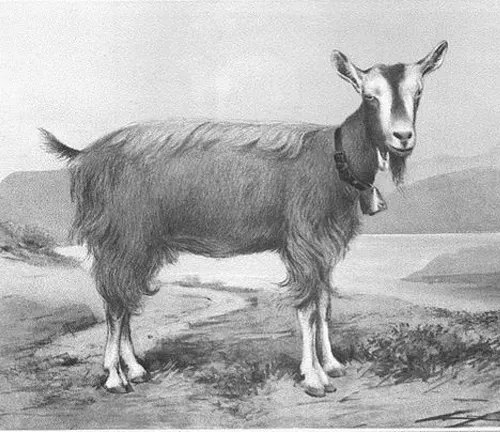
The ancestors of Toggenburg goats were likely brought to the region by early settlers or traders, where they adapted to the local climate and forage availability over time. Through selective breeding practices aimed at enhancing milk production and other desirable traits, the Toggenburg goat breed gradually emerged as a distinct breed with unique characteristics.
Historically, Toggenburg goats played a crucial role in Swiss agriculture, providing valuable dairy products such as milk, cheese, and butter to local communities. Their hardiness, adaptability, and productivity made them indispensable assets to farmers in the region.
As agriculture evolved and technology advanced, Toggenburg goats gained recognition beyond Switzerland, spreading to other parts of Europe and eventually to other continents. Today, they are cherished by goat enthusiasts and farmers worldwide for their gentle temperament, excellent milk production, and versatility in various agricultural settings.
Physical Characteristics
Coat and Coloration
Toggenburg goats are characterized by their short, fine coats that provide them with protection against the elements while maintaining a sleek appearance. The coat is typically dense and smooth, with individual hairs lying close to the body.
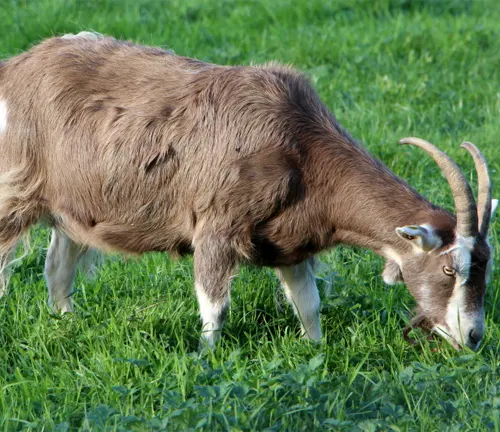
In terms of coloration, Toggenburg goats often display shades of brown ranging from light fawn to dark chocolate. They may also have distinctive white markings on their faces, legs, and tails. These markings often include stripes on their faces and a white triangle on their tails. Additionally, some Toggenburg goats may exhibit small white spots on their bodies, adding to their unique appearance.

Size and Build
Toggenburg goats are medium-sized animals with well-proportioned bodies and sturdy builds. Bucks (males) typically stand around 30 inches tall at the shoulder and weigh between 125 to 150 pounds, while does (females) are slightly smaller, standing around 28 inches tall and weighing between 110 to 135 pounds on average.
Despite their moderate size, Toggenburg goats possess a muscular frame and a robust constitution, allowing them to thrive in various environments and climates. Their agile movements and balanced physique make them well-suited for both grazing and navigating rugged terrain.
Temperament and Behavior

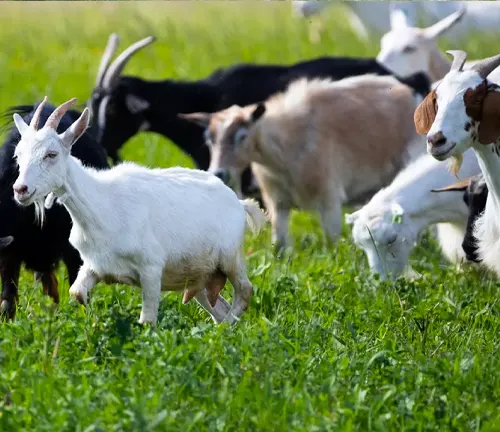
Toggenburg goats are renowned for their gentle and sociable temperament, making them popular choices for both experienced farmers and novice goat enthusiasts. Unlike some goat breeds known for their stubbornness or aggressiveness, Toggenburg goats are typically calm, docile, and easy to handle.
One of the most notable traits of Toggenburg goats is their friendly demeanor towards humans, often seeking out attention and interaction from their caretakers. They are known to form strong bonds with their owners and enjoy being petted and groomed.
In addition to their affectionate nature, Toggenburg goats are also intelligent and curious animals. They enjoy exploring their surroundings and engaging in playful activities, making them entertaining companions for farmers and families alike.
Housing and Care Requirements
Providing proper housing and care is essential for ensuring the health and well-being of Toggenburg goats. Whether you’re raising them on a small homestead or a larger farm, meeting their basic needs is crucial for their overall happiness and productivity.
Shelter
Toggenburg goats require sturdy shelters that provide protection from the elements, including rain, wind, and extreme temperatures. The shelter should be well-ventilated to prevent the buildup of moisture and ammonia, which can lead to respiratory issues. Adequate space is also important to allow goats to move around freely and lie down comfortably. Bedding such as straw or wood shavings should be provided for warmth and comfort.


Fencing
Secure fencing is essential for keeping Toggenburg goats safe and contained within their designated area. Fencing should be at least 4 feet high to prevent escape and should be regularly inspected for signs of wear or damage. Additionally, ensure that there are no gaps or spaces where goats could become trapped or injured.
Feeding and Nutrition
Toggenburg goats have specific dietary requirements that must be met to maintain their health and productivity. They require a balanced diet consisting of high-quality hay, fresh water, and supplemental grains or pellets. Additionally, access to pasture or browse is important for providing essential nutrients and promoting natural foraging behaviors. Goats should have continuous access to clean, fresh water to prevent dehydration, especially during hot weather.
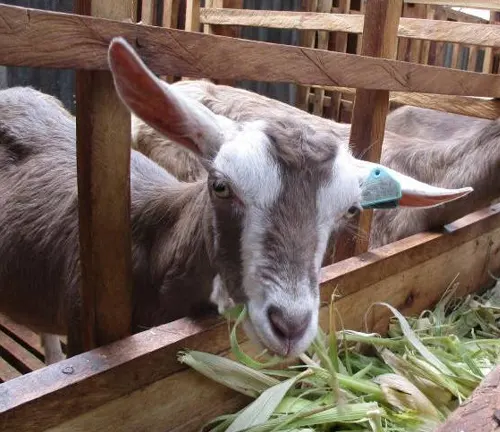
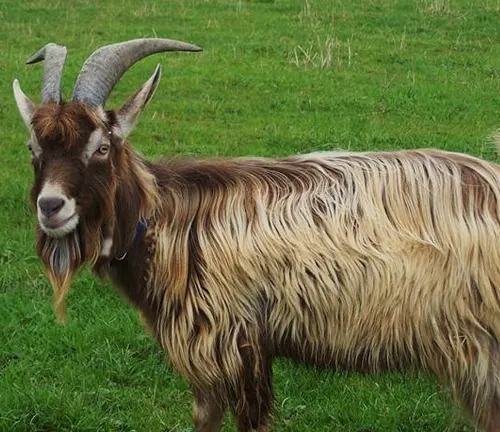
Grooming and Hoof Care
Regular grooming and hoof care are essential parts of Toggenburg goat maintenance. Goats should be brushed regularly to remove loose hair and debris, especially during shedding seasons. Hooves should be trimmed every 6-8 weeks to prevent overgrowth and hoof-related issues. It’s also important to check for signs of parasites, such as lice or mites, and treat them promptly to prevent infestations.
Healthcare
Routine healthcare is vital for keeping Toggenburg goats healthy and disease-free. This includes regular vaccinations against common goat illnesses, such as tetanus and enterotoxemia, as well as deworming treatments to control internal parasites. Regular health checks by a veterinarian can help identify any potential issues early and ensure prompt treatment.
Feeding and Nutrition


A balanced diet rich in fiber, vitamins, and minerals is vital for the optimal health and productivity of Toggenburg goats. High-quality hay, supplemented with grains and fresh greens, meets their nutritional requirements. Access to clean water at all times is essential to prevent dehydration.Here are three subtopics related to Feeding and Nutrition for Toggenburg goats:
- Grain and Concentrate Feeding: Toggenburg goats may require supplemental grain or concentrate feeding to meet their energy and protein needs, especially during periods of high production such as lactation. Grain feeds should be introduced gradually to prevent digestive upset, and the amount fed should be adjusted based on individual goat’s needs and production levels.
- Minerals and Supplements: Providing access to mineral supplements is essential for Toggenburg goats to maintain optimal health and prevent deficiencies. A mineral mix specifically formulated for goats should be available free-choice to ensure adequate intake of essential minerals such as calcium, phosphorus, magnesium, and selenium. Additionally, salt blocks should be provided to meet their sodium requirements.
- Feeding Management: Feeding Toggenburg goats should be done on a regular schedule to establish routine and prevent overeating or underfeeding. Goats should be fed in clean, dry feeding areas to minimize waste and reduce the risk of illness. Monitoring individual goats’ body condition and adjusting feed amounts as needed can help maintain optimal health and prevent obesity or malnutrition.
Breeding and Reproduction
Breeding Toggenburg goats requires careful selection of healthy, pedigreed individuals to maintain desirable traits and genetic diversity. Estrus detection and controlled mating are common practices employed by breeders to manage breeding programs effectively. Proper prenatal and postnatal care contribute to successful kidding outcomes. Here are three subtopics related to Breeding and Reproduction for Toggenburg goats:
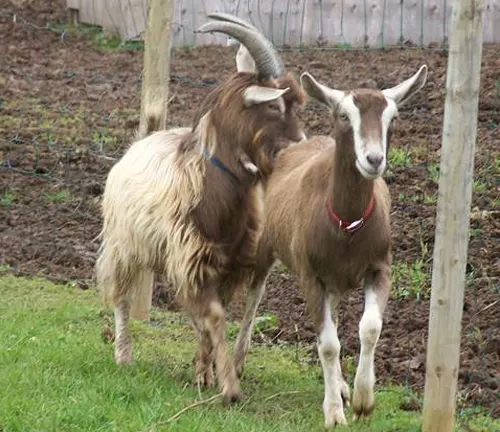
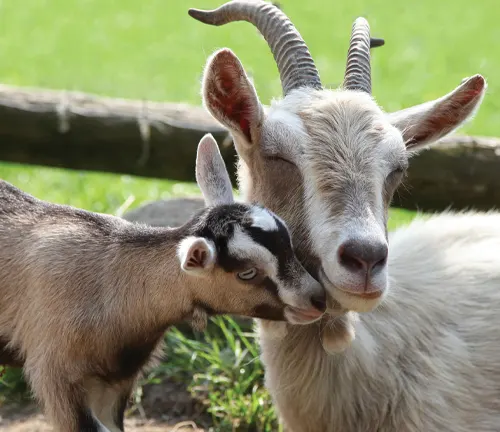
- Selective Breeding Practices: Selective breeding is essential for maintaining and improving the Toggenburg goat breed. Breeders carefully select breeding stock based on desirable traits such as milk production, conformation, and temperament to ensure the continuation of quality genetics within the herd.
- Mating Management: Effective mating management involves planning and coordinating breeding cycles to optimize reproductive success. Breeders may use techniques such as natural mating or artificial insemination (AI) to control mating outcomes and improve breeding efficiency.
- Prenatal and Postnatal Care: Providing proper prenatal and postnatal care is essential for ensuring the health and well-being of both does and kids. This includes monitoring does during pregnancy, ensuring proper nutrition and supplementation, and providing a clean and comfortable environment for kidding. Additionally, newborn kids should receive colostrum shortly after birth to boost their immune system and ensure a healthy start to life.
Common Health Issues
While generally hardy, Toggenburg goats are susceptible to certain health issues, including parasites, respiratory infections, and metabolic disorders. Routine veterinary care, vaccinations, and parasite control measures help mitigate these risks. Prompt identification and treatment of symptoms are crucial for preserving the well-being of the herd. Here are some common health issues that Toggenburg goats may encounter:
- Parasites: Toggenburg goats are susceptible to internal and external parasites such as worms, ticks, and lice. Parasitic infestations can lead to weight loss, anemia, decreased milk production, and overall poor health if left untreated. Regular deworming and parasite control measures are essential for maintaining goat health.
- Respiratory Infections: Respiratory infections, including pneumonia and upper respiratory tract infections, can occur in Toggenburg goats, especially during cold and damp weather conditions. Symptoms may include coughing, nasal discharge, labored breathing, and lethargy. Prompt veterinary attention and appropriate treatment with antibiotics are necessary to prevent the spread of infection and promote recovery.
- Metabolic Disorders: Toggenburg goats may be prone to metabolic disorders such as ketosis, hypocalcemia (milk fever), and pregnancy toxemia. These conditions can arise due to imbalances in diet, stress, or metabolic changes associated with pregnancy and lactation. Proper nutrition, management practices, and veterinary care are essential for preventing and managing metabolic disorders in goats.
- Hoof Problems: Hoof problems, including hoof rot, foot scald, and overgrown hooves, can affect Toggenburg goats, leading to lameness and discomfort. These issues often arise due to poor hoof care, unsanitary living conditions, or environmental factors such as wet and muddy ground. Regular hoof trimming, proper housing, and maintaining clean, dry living areas can help prevent hoof problems in goats.
- Reproductive Issues: Toggenburg goats may experience reproductive issues such as infertility, abortions, or dystocia (difficult births). These issues can be caused by factors such as genetic abnormalities, infectious diseases, nutritional deficiencies, or improper mating management. Breeding goats should undergo regular health checks and receive appropriate veterinary care to ensure reproductive health and successful breeding outcomes.
Uses and Products
Toggenburg goats are primarily valued for their high-quality milk, which is rich in butterfat and protein, making it ideal for cheese and yogurt production. Additionally, their fine, silky hair is sought after for textile applications, such as yarn and fiber crafts. Their adaptable nature also makes them suitable for brush clearing and weed control projects. Here are some common uses and products associated with Toggenburg goats:
- Dairy Production: Toggenburg goats are primarily valued for their high-quality milk, which is rich in butterfat and protein. The milk is commonly used to make a variety of dairy products, including cheese, yogurt, butter, and ice cream. Toggenburg goat milk is prized for its rich flavor and creamy texture, making it popular among artisanal cheese makers and dairy enthusiasts.
- Fiber: Toggenburg goats produce fine, silky hair that can be harvested and processed into fiber for textile applications. The goat’s hair is often blended with other fibers such as wool or silk to create luxurious yarns and fabrics. Toggenburg goat fiber is prized for its softness, luster, and durability, making it ideal for weaving, knitting, and spinning into various textiles.
- Meat Production: While not as common as dairy production, Toggenburg goats can also be raised for meat. The meat from Toggenburg goats is lean, tender, and flavorful, making it suitable for a variety of culinary dishes. Goat meat, also known as chevon or capretto, is enjoyed in many cultures around the world and is gaining popularity for its nutritional benefits and versatility in cooking.
- Land Management: Toggenburg goats are well-suited for brush clearing and weed control projects due to their browsing behavior and agile nature. They can efficiently graze on brush, weeds, and other vegetation, helping to maintain pastures, clear overgrown areas, and reduce fire hazards. Goat browsing can also promote biodiversity and improve soil health by cycling nutrients and reducing the spread of invasive plant species.
- Companionship and Therapy: Toggenburg goats are known for their gentle temperament and sociable nature, making them popular companion animals and therapy animals. Their friendly demeanor and affectionate personalities make them ideal companions for farmers, families, and individuals seeking emotional support or stress relief. Goat therapy programs, where goats interact with people in therapeutic settings, have been shown to provide numerous physical and psychological benefits.
Different Species
The Toggenburg goat breed itself is considered a single species. However, within the breed, there may be different bloodlines or strains that have developed over time due to selective breeding practices or geographical isolation.

Frequently Asked Questions (FAQs)
- What is a Toggenburg goat?
A Toggenburg goat is a breed of domesticated dairy goat known for its origins in the Toggenburg region of Switzerland. It is one of the oldest recognized dairy goat breeds. - Where do Toggenburg goats originate from?
Toggenburg goats originate from the Toggenburg region of Switzerland, where they were first documented in the 19th century. - What are the distinguishing characteristics of Toggenburg goats?
Toggenburg goats have medium-sized bodies covered in short, fine coats ranging from shades of brown to tan. They often have distinct white markings, particularly on their faces. Additionally, they are known for their erect ears and alert expression. - Are Toggenburg goats good for dairy production?
Yes, Toggenburg goats are excellent dairy producers. They produce moderate to high quantities of milk, which is prized for its rich flavor and high butterfat content, making it ideal for cheese and yogurt production. - How much milk does a Toggenburg goat produce on average?
On average, a Toggenburg goat produces between 1,500 to 2,000 pounds of milk per lactation cycle, which typically lasts around 305 days. - What is the lifespan of a Toggenburg goat?
Toggenburg goats have an average lifespan of 10 to 12 years, though some may live longer with proper care and management. - Do Toggenburg goats require special care or maintenance?
Like all goats, Toggenburg goats require regular feeding, access to clean water, shelter from the elements, and routine health care, including vaccinations and parasite control. Proper nutrition and grooming are also important for maintaining their health and well-being. - Are Toggenburg goats suitable for small-scale farming or homesteading?
Yes, Toggenburg goats are well-suited for small-scale farming or homesteading due to their manageable size, gentle temperament, and versatility in milk production and other agricultural roles. - How do Toggenburg goats compare to other goat breeds in terms of temperament?
Toggenburg goats are known for their docile and sociable temperament, making them easy to handle and suitable for various farming environments. They are often prized for their calm demeanor and cooperative nature. - Can Toggenburg goats be raised in different climates?
Yes, Toggenburg goats are adaptable to different climates and can thrive in various environments, though they may require additional protection from extreme weather conditions. - What is the history of Toggenburg goats in agriculture?
Toggenburg goats have a long history in agriculture, particularly in dairy farming. They were bred for their milk production and have been valued for their contributions to cheese and yogurt production for centuries. - Do Toggenburg goats have any specific dietary requirements?
Toggenburg goats require a balanced diet consisting of high-quality hay, grains, fresh greens, and access to clean water. Proper nutrition is essential for maintaining their health and productivity. - Are Toggenburg goats prone to any health issues?
While generally hardy, Toggenburg goats may be susceptible to common goat health issues such as parasites, respiratory infections, and metabolic disorders. Regular veterinary care and preventative measures can help minimize these risks. - How do you identify a purebred Toggenburg goat?
Purebred Toggenburg goats typically exhibit the breed’s distinctive physical characteristics, including their medium-sized bodies, short coats, and specific coloration with white markings. Registration papers from recognized breed associations can also confirm their pedigree. - What are the primary uses of Toggenburg goats besides dairy production?
In addition to dairy production, Toggenburg goats are valued for their meat, fiber, and as brush-clearing agents for land management purposes. Their versatile nature makes them valuable assets in various agricultural and ecological roles.


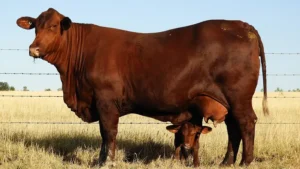



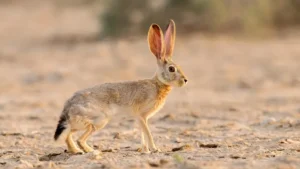



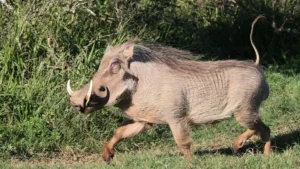



Leave your comment